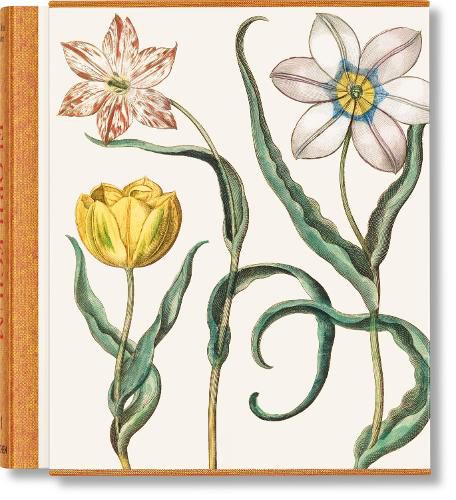Readings Newsletter
Become a Readings Member to make your shopping experience even easier.
Sign in or sign up for free!
You’re not far away from qualifying for FREE standard shipping within Australia
You’ve qualified for FREE standard shipping within Australia
The cart is loading…






A magnificent pictorial document of the flowers grown in the greatest German garden of its time, the Hortus Eystettensis is in a class of its own when it comes to the variety and range of flowers engraved. Founded in 1355, Willibaldsburg Castle was rebuilt as an imposing Renaissance palace with a spectacular garden divided into eight zones on different levels by Prince-Bishop Johann Konrad von Gemmingen (1593/95-1612). Von Gemmingen enlisted Basilius Besler (1561-1629), an apothecary from Nuremberg, to capture the glory and diversity of his garden in a book containing 367 copperplate engravings–a comprehensive work that ranks to this day among the great treasures of botanical literature. Besler’s Hortus Eystettensis, published in 1613, is organized according to the four seasons; following the classification system used today, the plants in the catalog belong to 90 families in total and cover 340 genera, some of which are represented by several species. Carl Linnaeus, the legendary 18th-century botanist and zoologist, described Besler’s book as an incomparable work. The book has survived centuries longer than the gardens; they were destroyed by invading Swedish troops in 1634. However, in 1998 a reconstruction of the original garden opened to the public in Eichstatt. This XXL-sized facsimile’s painstaking reproductions are taken from a very well preserved hand-painted edition, one of only a few still extant, owned by the university library of Eichstatt-Ingolstadt. In auction, the asking price for a first-edition copy is half a million dollars. You can now enjoy its unique qualities for considerably less.
$9.00 standard shipping within Australia
FREE standard shipping within Australia for orders over $100.00
Express & International shipping calculated at checkout
Stock availability can be subject to change without notice. We recommend calling the shop or contacting our online team to check availability of low stock items. Please see our Shopping Online page for more details.
A magnificent pictorial document of the flowers grown in the greatest German garden of its time, the Hortus Eystettensis is in a class of its own when it comes to the variety and range of flowers engraved. Founded in 1355, Willibaldsburg Castle was rebuilt as an imposing Renaissance palace with a spectacular garden divided into eight zones on different levels by Prince-Bishop Johann Konrad von Gemmingen (1593/95-1612). Von Gemmingen enlisted Basilius Besler (1561-1629), an apothecary from Nuremberg, to capture the glory and diversity of his garden in a book containing 367 copperplate engravings–a comprehensive work that ranks to this day among the great treasures of botanical literature. Besler’s Hortus Eystettensis, published in 1613, is organized according to the four seasons; following the classification system used today, the plants in the catalog belong to 90 families in total and cover 340 genera, some of which are represented by several species. Carl Linnaeus, the legendary 18th-century botanist and zoologist, described Besler’s book as an incomparable work. The book has survived centuries longer than the gardens; they were destroyed by invading Swedish troops in 1634. However, in 1998 a reconstruction of the original garden opened to the public in Eichstatt. This XXL-sized facsimile’s painstaking reproductions are taken from a very well preserved hand-painted edition, one of only a few still extant, owned by the university library of Eichstatt-Ingolstadt. In auction, the asking price for a first-edition copy is half a million dollars. You can now enjoy its unique qualities for considerably less.